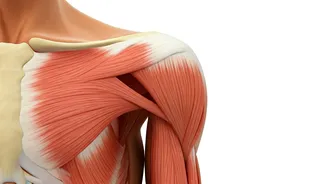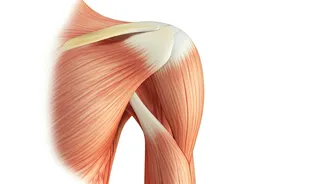Understanding Shoulder Health
Shoulder health is especially critical as individuals age, impacting daily activities and overall well-being. The shoulder, a complex ball-and-socket joint,
is prone to wear and tear over time. As people get older, the tissues in their shoulders, including tendons, ligaments, and cartilage, undergo natural changes. These changes can increase the risk of injuries and conditions such as rotator cuff tears, osteoarthritis, and frozen shoulder. Understanding these age-related changes is the first step toward proactive care. Recognizing the shoulder's vulnerability allows older adults to take preventative measures and seek timely intervention when necessary. It is important to know that early detection and proper management can significantly improve shoulder health and prevent long-term complications. The goal is to maintain mobility, reduce pain, and sustain an active lifestyle, emphasizing the significance of continuous care and understanding of the shoulder's unique needs at this stage of life.
Daily Life Adjustments
Adapting daily routines can dramatically protect shoulder health. Simple changes can reduce stress on the shoulders and prevent injury. Firstly, consider the way you lift objects. Always bend at the knees and keep the object close to the body, distributing the weight evenly. Avoid lifting heavy items overhead whenever possible; if you must lift something up high, break the task into smaller, manageable portions. Second, pay attention to posture. Maintaining good posture while sitting and standing can alleviate strain on the shoulder muscles. Be conscious of your posture throughout the day, ensuring your shoulders are relaxed and not hunched forward. Using ergonomic tools like a supportive chair at your desk or adjusting your computer screen height can also provide significant support. Thirdly, modify sleeping positions. Sleeping on your side can put pressure on the shoulder. Try sleeping on your back with a pillow under your arms to provide support. Furthermore, it is very important to incorporate short, frequent breaks into your day to stretch and move your shoulders, countering the effects of prolonged sitting or repetitive motions.
Exercises and Stretching
Regular exercise and stretching are vital in maintaining shoulder health. Specific exercises can strengthen shoulder muscles, improve flexibility, and reduce the risk of injury. Begin with gentle range-of-motion exercises, such as shoulder rolls, arm circles, and pendulum exercises. These exercises help keep the joint lubricated and flexible. Gradually incorporate strengthening exercises like resistance band exercises, focusing on muscles that support the shoulder, like the rotator cuff. Perform these exercises with proper form to avoid further strain. Stretching is equally important; holding stretches for at least 30 seconds can improve flexibility and reduce muscle tension. Some beneficial stretches include cross-body arm stretches and doorway stretches, which target different areas of the shoulder and upper back. Always consult a healthcare professional before starting any new exercise program, especially if you have pre-existing shoulder issues. Consistency is key; aim to perform these exercises several times a week for optimal results. It is important to listen to your body and stop if you feel any pain, and remember to focus on correct technique and gradual progression to avoid injury.
Professional Guidance and Care
Seeking professional guidance is crucial for long-term shoulder health, especially as one ages. If you experience persistent shoulder pain or decreased range of motion, consult a doctor. Early intervention can prevent minor issues from worsening. A physical therapist can provide tailored exercises and techniques to address your specific needs and condition. They can help identify muscle imbalances and teach you how to correct poor movement patterns. If you experience serious injuries, such as a rotator cuff tear, you may need to undergo medical treatment. This might involve medication, injections, or, in severe cases, surgery. Following post-surgical rehabilitation plans diligently is very important for a complete recovery. Moreover, be proactive with regular check-ups with your healthcare provider. Discuss any concerns you have and make sure your doctor is well-informed about your shoulder health. A team approach, involving you, your doctor, and possibly a physical therapist, ensures a comprehensive and effective care strategy, allowing you to maintain your shoulder function and quality of life.












